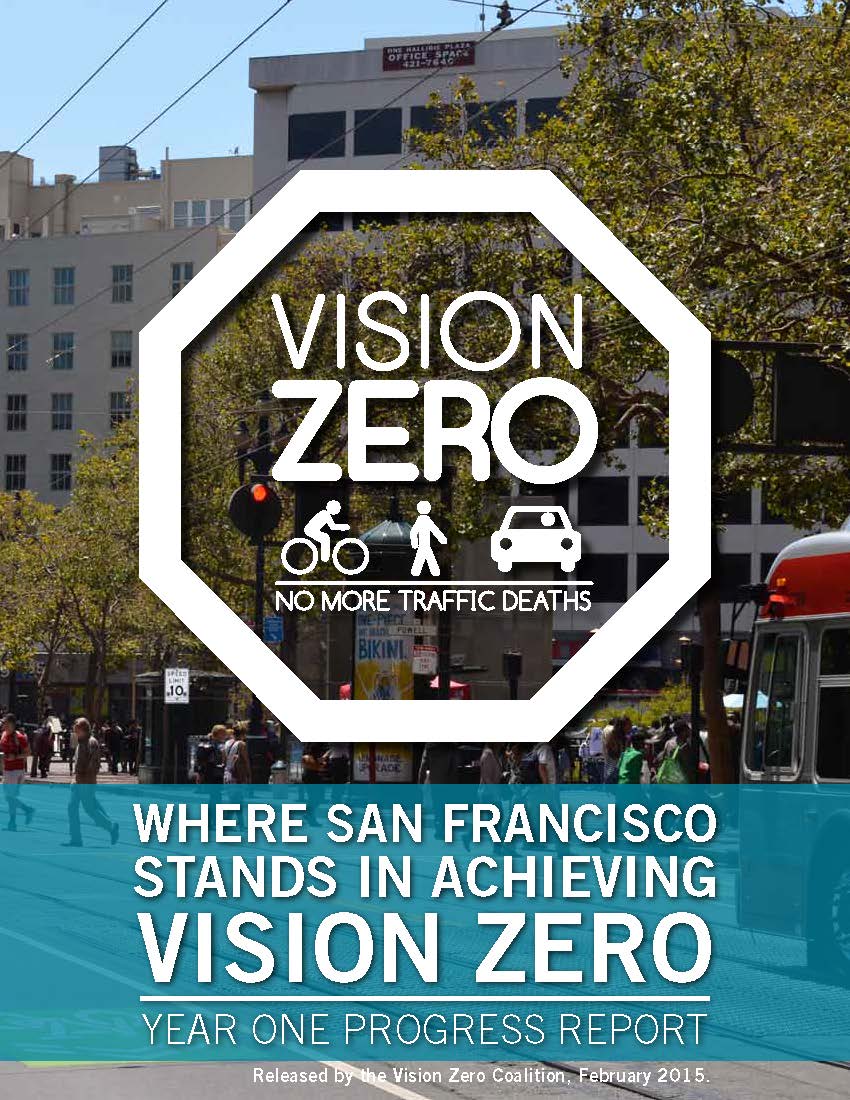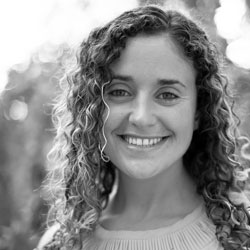
On our latest Distance Learning Webinar we explored leading-edge work from local advocacy organizations that are advancing Vision Zero for everyone.
As we shared yesterday, the Vision Zero effort in San Francisco was initiated in early 2014 by Leah Shahum (then the Executive Director of the San Francisco Bicycle Coalition) and Nicole Ferrara, the executive director of Walk SF. With a Masters in Public Health and a Masters in City and Regional Planning from the University of California-Berkeley, Ferrara joined Walk SF in 2013 with just the type of background to turn her city in a model for Vision Zero.
Here are some of her top take-aways on building a Vision Zero movement for everyone in the Bay Area.
(Are you an Alliance member? You can watch the full recording of the webinar — and dozens of others — in our Resource Library! Click here!)
Working with public health officials
For Walk SF, changing the discussion about street safety was catalyzed by its work with local health officials.
"Walk SF has a long-standing partnership with the public health department, which has been involved in injury prevention despite the fact that many funding sources have disinvested in this area," Ferrara said. "They saw bike-ped safety as an ongoing issue, a pervasive problem in our community and they spent a lot of time gathering data and making the case. Over the past few years, they really helped to shape the conversation in a whole new way.
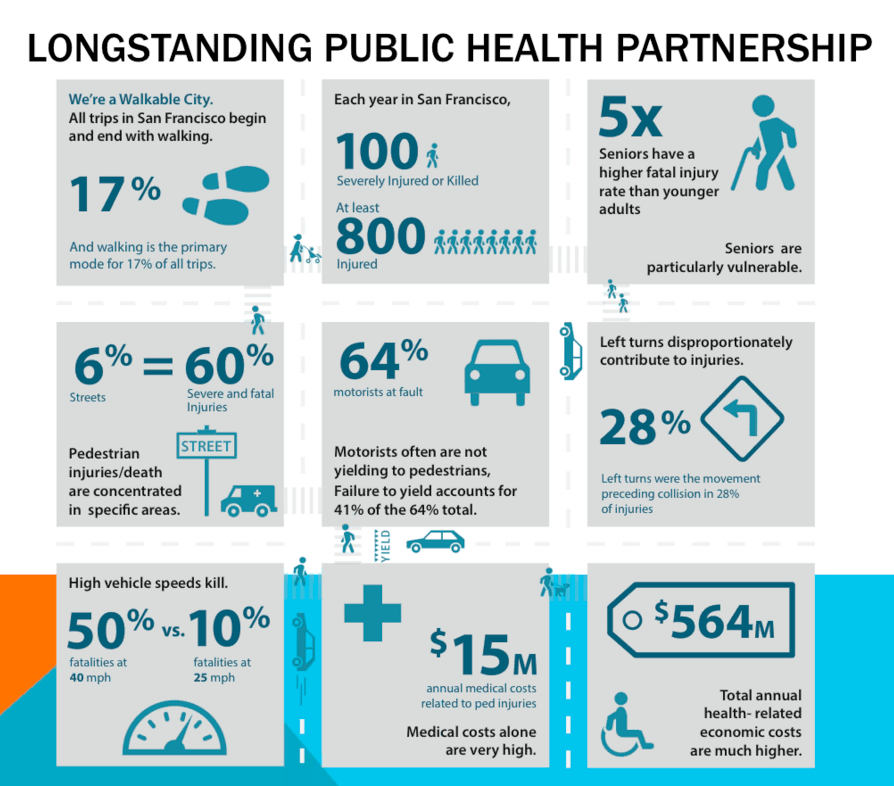
Infographic created by the public health department
They also helped to identify and highlight that the most densely populated, low-income communities are where we’re seeing the highest proportion of fatal and severe injuries. The previous way of doing business was that the squeaky wheel got the grease — and that was not the low-income communities of color. It was the wealthier communities. This new approach highlighted the equity impacts of our transportation system."
Prioritizing communities of need
At the same time, the city had been working to increase pedestrian safety, as well — and its WalkFirst Plan integrated that equity frame.
"They looked at those high-injury corridors and then looked at the literature to identify the quick and cost effective improvements that they could implement (in addition to more long-term solutions)," Ferrara said. "In terms of identifying priorities, the scoring metric actually gives an extra point to communities of concern, an extra point to injuries involving seniors and an extra point to injuries involving kids. And this is out of four points, so these are the majority of ways the city is prioritizing investments. Which is really progressive for the city — and a big change from what we had been doing in the past."
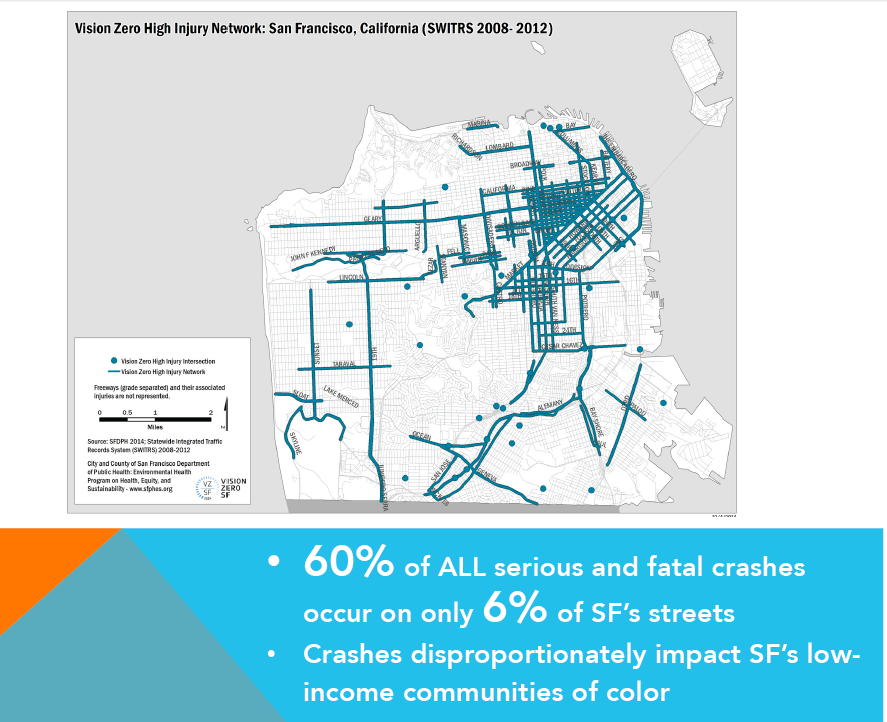
Moving from Vision Zero adoption to implementation
But all of those improvements weren't enough.
"We had all this background information and data and [our transportation agency] starting to think differently and plan differently for pedestrian improvements, but, at the same time, we still had these heart-wrenching fatalities and they were still happening on far too frequent of a basis," Ferrara explained. "It was continuing to get the public upset, but that anger and frustration wasn't directed at anything.
That's when Leah and I got together and said something stronger needs to happen, and we created this Vision Zero coalition that now has 40 organizations working together to hold city accountable. So we worked to get decisionmakers to adopt Vision Zero, and, in 2014, we spent lot of time crafting policies, pushing the city to develop an action plan, and developing a coalition. But since then what we’ve really been doing is the implementation phase, which is the tough stuff."
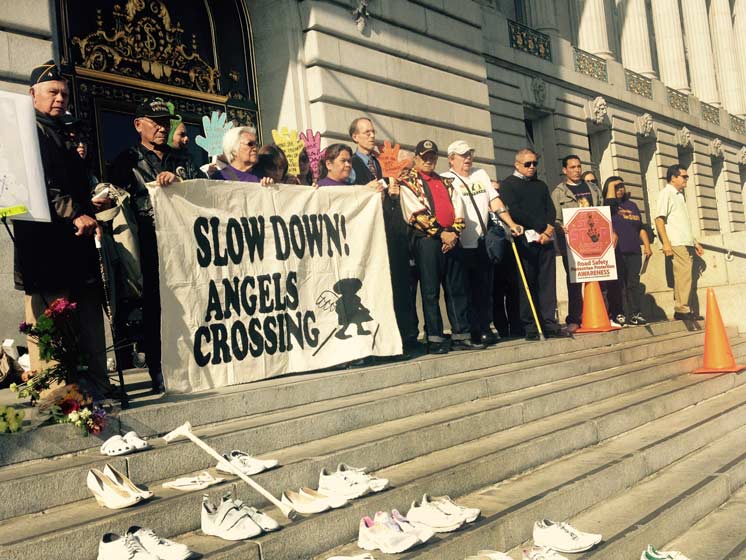
Vision Zero Coalition rally
Supporting allied leaders
"One thing I especially wanted to highlight is the way we work to support coalition leaders," Ferrara continued. "[Below] is a press event after a senior was hit and killed at this intersection. The Chinatown Community Development Center organized an entire event directed toward fixing this intersection and raising the visibilty of the fact that so many seniors live and walk in Chinatown.
They took the lead and got tons of media and residents to the event, but we, throughout the process, helped them shape the effort, from the press release to talking points to working behind the scenes to get the transportation department to commit to fixing this intersection.
It proved that when you have a community that shows its frustration and desire to bring justice to the streets, that is what happens. MTA [Municipal Transportation Agency] went out in just a few months and installed a pedestrian scramble."

Changing city systems to integrate Vision Zero
In the implementation phase, Walk SF has also taken on the role of agency watchdog.
"Our job has been to monitor projects and make sure [the MTA is] meeting their goals of implementing quick and effective treatments, like bulb outs and making wide crosswalks," she said. "We've also been monitoring and supporting strong projects, and making sure that what MTA is proposing will work and will lead to a street that looks like a Vision Zero street... As advocates we can also come in a leverage our coalition to make sure leadership at MTA, who have to approve these decisions, know there's public support.
And another way we do monitoring is the Vision Zero coalition released a prorgess report at the end of the first year, which not only measured how we were doing but set out our priorities for the coming year."
Changing city systems to integrate Vision Zero
"We've also done a lot of work in systems changes — in terms of how do we change the day-to-day practices so that Vision Zero becomes institutionalized and part of the operations of various city agencies?
- So, for instance, with the police department we have a quarterly update on how the department is doing in terms of traffic citations and data mapping and there's been a big push toward data transparency and accountability.
- With transportation planners and engineers, we're looking at an early input checklist so, before a project takes place, the agencies and departments know this agency is planning to touch this street and if it's flagged as a high-priority Vision Zero corridor they know to check in and integrate Vision Zero treatments before it becomes too late.
- And with the public health department we advocated for new positions for injury prevention and data analysis. They were able to create an amazing online database called TransBaseSF.org that's GIS-based. They've trained community members and other city agencies on how to use it and it's really a wealth of data that can empower communities and city staff alike."
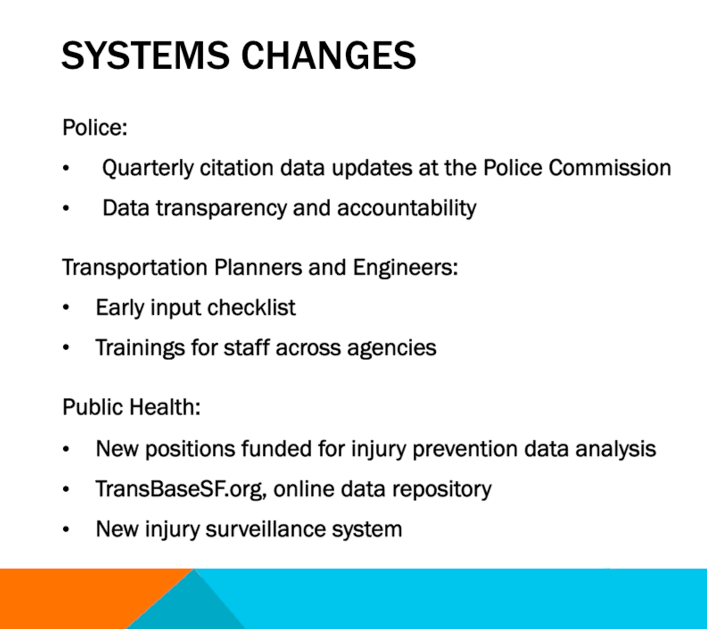
Follow San Francisco's progess and Walk SF's efforts at www.walksf.org

